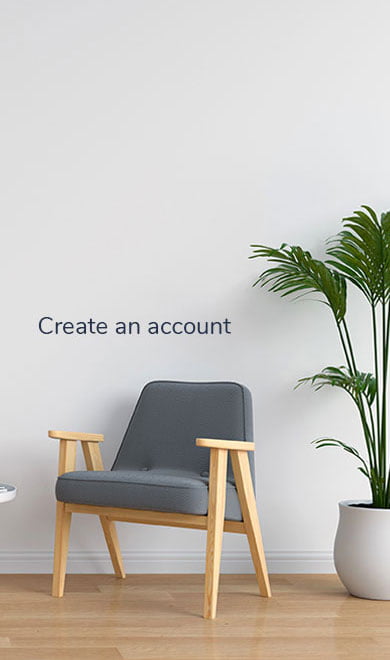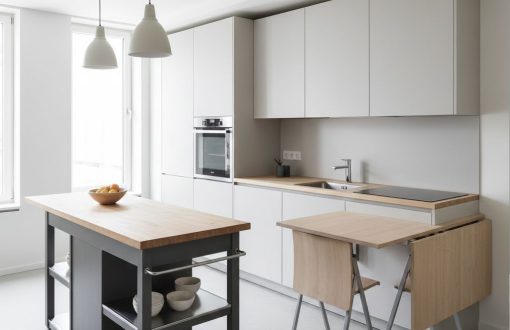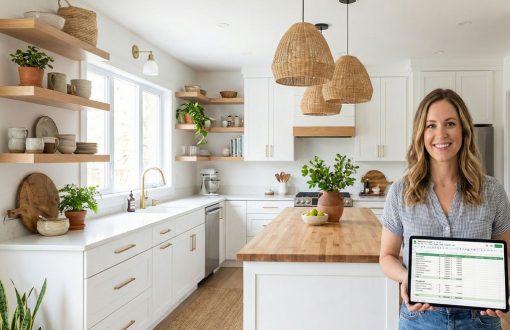Best Materials for Bathroom Remodeling

Best Materials for Bathroom Remodeling: What to Choose for Flooring, Walls, and Countertops
When it comes to bathroom remodeling, selecting the right materials can make all the difference in achieving a stylish, durable, and functional space. With so many options available for flooring, walls, and countertops, it’s important to understand the pros and cons of each to make informed decisions. From classic tiles to modern acrylic panels, the materials you choose will not only impact the overall look of your bathroom but also its longevity and maintenance requirements.
 Flooring materials like ceramic, vinyl, and natural stone each bring their own benefits and drawbacks, ranging from affordability and comfort to durability and maintenance demands. Similarly, for walls, options such as tiles, glass, or acrylic panels offer varying levels of moisture resistance, aesthetic appeal, and ease of cleaning. When it comes to countertops, choosing between materials like quartz, granite, and laminate requires balancing factors like cost, style, and stain resistance.
Flooring materials like ceramic, vinyl, and natural stone each bring their own benefits and drawbacks, ranging from affordability and comfort to durability and maintenance demands. Similarly, for walls, options such as tiles, glass, or acrylic panels offer varying levels of moisture resistance, aesthetic appeal, and ease of cleaning. When it comes to countertops, choosing between materials like quartz, granite, and laminate requires balancing factors like cost, style, and stain resistance.
Understanding the differences in cost and durability is crucial to ensuring that your investment stands the test of time, while also adding value to your home. Whether you’re after a budget-friendly makeover or a luxurious retreat, knowing which materials best suit each part of your bathroom will help you create a space that is not only beautiful but also built to last.
Flooring: A Solid Foundation
 When choosing flooring for a bathroom remodel, it’s essential to consider materials that can handle high moisture levels, resist wear and tear, and still look great. The right flooring will not only enhance the bathroom’s aesthetic but also provide the durability needed to withstand daily use. Let’s take a closer look at some of the most popular flooring options for bathrooms, including ceramic and porcelain tile, vinyl flooring, and natural stone, along with their pros and cons, costs, durability, and aesthetic appeal.
When choosing flooring for a bathroom remodel, it’s essential to consider materials that can handle high moisture levels, resist wear and tear, and still look great. The right flooring will not only enhance the bathroom’s aesthetic but also provide the durability needed to withstand daily use. Let’s take a closer look at some of the most popular flooring options for bathrooms, including ceramic and porcelain tile, vinyl flooring, and natural stone, along with their pros and cons, costs, durability, and aesthetic appeal.
Ceramic and Porcelain Tile
Ceramic and porcelain tiles are among the most popular choices for bathroom flooring, and for good reason. These tiles are water-resistant, highly durable, and available in countless colors, patterns, and sizes, making them easy to match with any design style. Porcelain is denser and more impervious to water than ceramic, making it especially suitable for high-moisture areas like bathrooms. The tiles can be arranged in various patterns, from traditional squares to contemporary hexagons, providing endless possibilities for a custom look.
However, tile floors can feel cold underfoot, which might be less comfortable during the winter months, although adding radiant heating can mitigate this issue. Tiles can also become slippery when wet, but opting for textured or matte finishes can help improve traction. The cost for ceramic and porcelain tiles ranges from $3 to $10 per square foot, depending on quality and design. In terms of durability, they are a long-lasting choice that can endure decades of use, though the grout may require periodic cleaning and resealing to prevent mold and mildew growth.
Vinyl Flooring
Vinyl flooring has evolved significantly in recent years, with luxury vinyl tiles (LVT) and planks offering a realistic look of wood or stone at a fraction of the cost. Vinyl is waterproof, making it an excellent option for bathrooms, and it’s softer and warmer underfoot compared to tile. The material is also budget-friendly and easy to install, often available in peel-and-stick formats that are perfect for DIY enthusiasts. Its resistance to moisture, stains, and scratches makes vinyl a practical choice for busy households.
On the downside, vinyl may not have the high-end appearance of natural materials like stone or hardwood. Although it’s durable, vinyl can still be punctured by sharp objects and might wear out faster in high-traffic areas compared to tile or stone. The cost of vinyl flooring typically falls between $2 and $7 per square foot, depending on the quality and style chosen. Its durability ranges from moderate to high, with an average lifespan of 10-20 years, making it a good balance between cost and longevity.
Natural Stone
For a truly luxurious look, natural stone flooring, such as marble, granite, or slate, can make a dramatic statement in a bathroom. Each piece of stone has a unique appearance, adding character and elegance to the space. Natural stone is also very durable and, when properly sealed, can resist moisture, stains, and wear. Its natural beauty adds to the aesthetic value, creating a sophisticated feel that enhances any bathroom design.
However, natural stone is porous and will require regular sealing to maintain its resistance to water and stains. It can also be quite expensive, and if the bathroom is located in a cold climate, the flooring can feel chilly underfoot unless heated. The cost for natural stone flooring typically ranges from $5 to $20 per square foot, making it a premium option. Despite its higher maintenance needs, stone is extremely durable and can last a lifetime when properly cared for, adding long-term value to the home.
When deciding on bathroom flooring, it’s important to weigh these factors carefully. Ceramic and porcelain tiles offer a classic and durable choice, vinyl provides an affordable and versatile alternative, while natural stone delivers unmatched luxury. By understanding the unique advantages and limitations of each material, homeowners can choose the flooring that best fits their needs, budget, and style preferences, setting a solid foundation for the rest of the bathroom remodel.
Wall Materials: Style Meets Practicality
 When remodeling a bathroom, selecting the right wall materials is essential for creating a space that is both visually appealing and capable of handling high humidity and moisture exposure. Bathroom walls require materials that can withstand these conditions while still providing aesthetic versatility. Several popular options include ceramic and porcelain tiles, acrylic panels, and glass tiles. Each of these materials offers unique benefits and drawbacks, so let’s explore their pros and cons, cost, durability, and visual appeal.
When remodeling a bathroom, selecting the right wall materials is essential for creating a space that is both visually appealing and capable of handling high humidity and moisture exposure. Bathroom walls require materials that can withstand these conditions while still providing aesthetic versatility. Several popular options include ceramic and porcelain tiles, acrylic panels, and glass tiles. Each of these materials offers unique benefits and drawbacks, so let’s explore their pros and cons, cost, durability, and visual appeal.
Ceramic and Porcelain Tile
Ceramic and porcelain tiles are among the most commonly used materials for bathroom walls, and for good reason. These tiles are water-resistant, easy to clean, and come in various colors, patterns, and sizes, making it simple to customize the look of the bathroom. Porcelain tiles, being denser and less porous than ceramic, offer superior water resistance, which is especially valuable for areas like shower walls. The versatility of tile designs—from classic subway tiles to intricate mosaics—allows homeowners to achieve almost any style, from modern to traditional.
On the downside, installing tiles can be labor-intensive and may require professional installation, especially for complex patterns. While tiles themselves are easy to clean, the grout lines can accumulate mold and mildew if not maintained regularly, necessitating periodic resealing or special cleaning products. The cost for ceramic and porcelain tiles typically ranges from $2 to $15 per square foot, depending on the type and design. In terms of durability, these tiles are a long-lasting option that can withstand years of use, provided the grout is well-maintained.
Acrylic Panels
Acrylic panels offer a cost-effective and low-maintenance alternative to traditional tiles. They are lightweight, waterproof, and come in various finishes that mimic the look of tile, marble, or stone without the hassle of grout lines. Acrylic panels are also easy to install, often making them a popular choice for DIYers looking for a quick bathroom upgrade. Because they are resistant to mold and mildew, they are an especially practical option for shower walls.
However, while acrylic panels are durable, they can be prone to scratching, which may affect their appearance over time. Additionally, they may not provide the high-end look that natural materials or tiles offer, which could be a drawback for homeowners seeking a more luxurious feel. The cost of acrylic panels generally falls between $5 and $10 per square foot, making them an affordable choice for budget-conscious remodelers. Their durability is considered moderate, with proper care extending their lifespan for many years.
Glass Tile
Glass tile is an elegant option that can add a touch of sophistication to any bathroom. Known for its reflective qualities, glass tile can make a small bathroom feel larger and brighter by bouncing light around the room. Available in various colors and sizes, glass tiles can be used to create eye-catching accent walls, borders, or even full shower enclosures. They are also non-porous, which makes them highly resistant to mold, mildew, and staining.
However, the beauty of glass tiles comes at a higher cost, both for the material itself and for installation. They are more fragile than ceramic or porcelain, which means they can crack under impact. Additionally, glass tiles tend to show smudges, water spots, and soap residue more easily, requiring frequent cleaning to maintain their pristine appearance. The cost for glass tile ranges from $7 to $30 per square foot, depending on the style and quality. Although glass tiles are durable, their susceptibility to cracking may require occasional repairs.
Paint
 While tiles and panels are common choices, paint is another viable option for bathroom walls that don’t directly encounter water, such as above the shower or vanity area. High-quality, moisture-resistant paint can provide a clean and fresh look, with plenty of color options to suit any design scheme. It’s also the most affordable wall treatment, with paint costing roughly $1 to $5 per square foot, depending on the quality and brand.
While tiles and panels are common choices, paint is another viable option for bathroom walls that don’t directly encounter water, such as above the shower or vanity area. High-quality, moisture-resistant paint can provide a clean and fresh look, with plenty of color options to suit any design scheme. It’s also the most affordable wall treatment, with paint costing roughly $1 to $5 per square foot, depending on the quality and brand.
However, paint alone is not suitable for areas that are regularly exposed to water, such as inside the shower. It may also need to be touched up more frequently compared to tile or panels due to the potential for peeling or staining. Nevertheless, paint is a flexible and cost-effective way to refresh the bathroom and can be combined with other materials for a mixed-texture look.
When selecting materials for bathroom walls, balancing practicality and style is crucial. Ceramic and porcelain tiles offer classic durability with endless design possibilities, acrylic panels provide a low-maintenance and budget-friendly option, while glass tiles bring a touch of luxury with their light-reflecting properties. Even paint has its place for creating contrast or updating color. Understanding the pros and cons of each material ensures that homeowners can make informed decisions that will keep their remodeled bathroom looking stylish and standing strong for years to come.
Countertops: Beauty and Functionality
Choosing the right countertop material is a critical aspect of bathroom remodeling, as it needs to balance beauty and practicality. Countertops are not only a key focal point in the bathroom but also a functional surface that must endure frequent use, exposure to moisture, and the occasional spill. The most popular options for bathroom countertops include quartz, granite, and laminate, each offering unique benefits and drawbacks. Let’s delve into the details regarding their pros and cons, costs, durability, and aesthetic appeal.
Quartz
Quartz countertops are engineered from natural quartz combined with resins and pigments, making them a non-porous and highly durable choice. Because of its non-porous nature, quartz is resistant to stains, scratches, and bacteria, which makes it an ideal option for a bathroom setting. It doesn’t require sealing, unlike natural stones, which means lower maintenance over time. Quartz is available in various colors and patterns, including designs that mimic the appearance of marble or other natural stones, providing plenty of versatility in terms of style.
However, quartz can be on the expensive side, with costs typically ranging from $50 to $150 per square foot. It is also not completely immune to damage; while highly resistant, quartz can chip or crack if subjected to strong impact. Additionally, some colors of quartz may fade over time with prolonged exposure to direct sunlight, although this is less of a concern in most bathrooms. Its durability is exceptionally high, often considered one of the best options for bathroom countertops due to its resistance to water and everyday wear.
Granite
 Granite is a natural stone that is popular for its unique patterns and natural beauty. Each slab of granite has distinct veining and color variations, which can give the bathroom a luxurious and custom look. Granite is also highly durable and heat-resistant, making it suitable for bathrooms where hair styling tools might be used. When properly sealed, granite is resistant to moisture and stains, although it does need periodic resealing to maintain its protective barrier.
Granite is a natural stone that is popular for its unique patterns and natural beauty. Each slab of granite has distinct veining and color variations, which can give the bathroom a luxurious and custom look. Granite is also highly durable and heat-resistant, making it suitable for bathrooms where hair styling tools might be used. When properly sealed, granite is resistant to moisture and stains, although it does need periodic resealing to maintain its protective barrier.
The main drawback of granite is the maintenance required to keep it in good condition. Because it is a porous material, it must be sealed regularly to prevent water and cosmetic products from seeping in and causing stains. Additionally, granite is a heavy material, which may necessitate reinforced cabinetry to support its weight. The cost for granite countertops usually ranges from $40 to $100 per square foot, depending on the rarity and quality of the stone. In terms of durability, granite is a high-performing material that can last for decades with proper care, making it a worthwhile investment for those who appreciate its natural elegance.
Laminate
Laminate countertops are a budget-friendly option that can still offer style and functionality. Made from layers of paper or fabric over particleboard, laminate can mimic the appearance of more expensive materials such as wood, stone, or quartz. It is available in a wide range of colors and patterns, allowing for plenty of design flexibility. Laminate is also lightweight, making it easy to install and an ideal choice for DIY bathroom remodels.
However, laminate countertops are not as durable as natural stone or engineered materials. They can be easily scratched, burned, or damaged by water if the edges are not properly sealed. Laminate is also more susceptible to wear and tear over time, which means it may need to be replaced sooner than other materials. Despite these limitations, the affordability of laminate is a significant advantage, with costs typically ranging from $10 to $40 per square foot. Its durability is moderate, making it suitable for bathrooms where heavy use and harsh conditions are not a concern.
Marble
 Marble countertops are synonymous with luxury, featuring elegant veining and a sophisticated look that can elevate the aesthetic of any bathroom. Marble is a natural stone, each slab with its unique patterns, which adds to the distinctiveness of the space. It is heat-resistant and cool to the touch, making it ideal for creating a spa-like atmosphere in the bathroom. However, marble is a softer stone than granite or quartz, making it more prone to scratches, etching, and staining.
Marble countertops are synonymous with luxury, featuring elegant veining and a sophisticated look that can elevate the aesthetic of any bathroom. Marble is a natural stone, each slab with its unique patterns, which adds to the distinctiveness of the space. It is heat-resistant and cool to the touch, making it ideal for creating a spa-like atmosphere in the bathroom. However, marble is a softer stone than granite or quartz, making it more prone to scratches, etching, and staining.
The porosity of marble also requires regular sealing to prevent damage from water, cosmetics, or cleaning products. Additionally, marble can be one of the most expensive countertop materials, with prices ranging from $50 to $200 per square foot depending on the quality and origin. Its durability is high when it comes to heat resistance, but its susceptibility to scratches and etching means it may require more maintenance to keep it looking pristine.
Solid Surface
Solid surface countertops, made from a blend of acrylic or polyester resins with fillers, provide a seamless appearance that can easily be customized to fit any bathroom layout. They are available in various colors and patterns, some of which can mimic the look of natural stone. One of the advantages of solid surface countertops is that minor scratches and damage can be repaired relatively easily through sanding. The material is also non-porous, which makes it resistant to moisture and bacteria.
However, solid surface countertops are not as heat-resistant as stone, and they can be damaged by hot objects. They may also lack the natural beauty and uniqueness of materials like marble or granite. The cost for solid surface countertops typically falls between $35 and $85 per square foot, making them a mid-range option in terms of pricing. Durability is moderate to high, especially for daily use in a bathroom, as long as care is taken to avoid placing hot items directly on the surface.
In choosing the best countertop material for a bathroom remodel, it’s important to consider not only the aesthetic appeal but also the functional requirements of the space. Quartz offers durability and low maintenance, granite provides natural beauty and heat resistance, and laminate delivers budget-friendly versatility. Marble adds a touch of luxury, while solid surface countertops offer seamless customization. By understanding the unique characteristics of each option, homeowners can select a countertop material that perfectly balances beauty and functionality in their bathroom remodel.
Final Thoughts: Make It Your Own!
Choosing the best materials for your bathroom remodel comes down to balancing your budget, style preferences, and the specific demands of each area. If you love a luxurious look, consider splurging on natural stone for countertops or walls. If practicality is your priority, go for durable options like porcelain tile or quartz.
Remember, it’s your space, so have fun with the process and make choices that reflect your personal style! And don’t worry if things feel a bit overwhelming at first—you’re not alone. With some planning and research, your dream bathroom is just a few steps away.
Happy remodeling!




